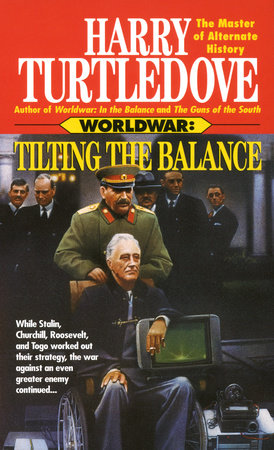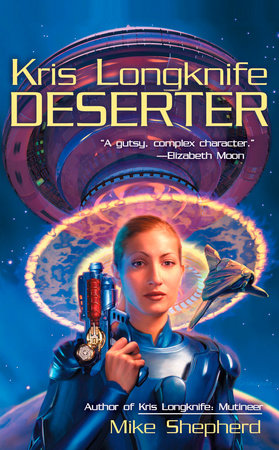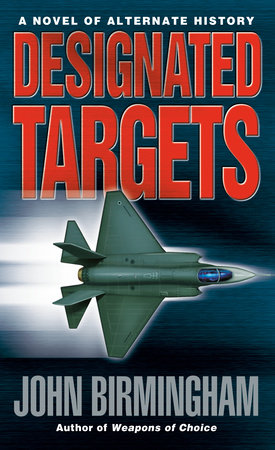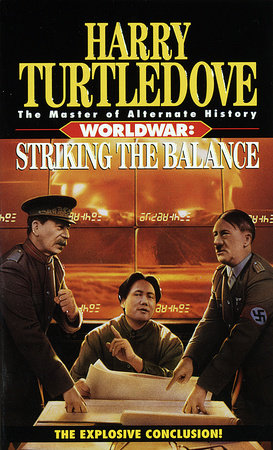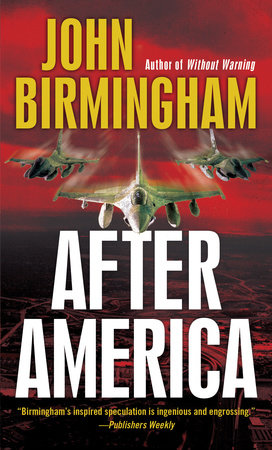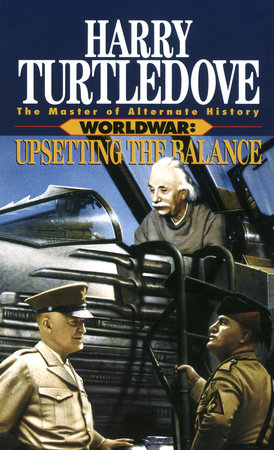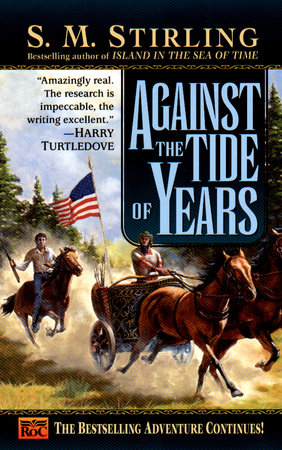Essay by Taylor Anderson on Distant Thunders The World of “Destroyermen”
I love “what if.” Not only is it the ultimate foundation of all fiction, it’s the prime mover behind every technological advancement in human history. “What if I tie this sharp rock to the end of this stick?” The spear, arrow, axe, grubbing hoe—virtually every early weapon and modern garden tool is born. “What if we harness the power of the atom?” Nuclear bombs and, incidentally, an efficient and relatively benign energy source are created. “What if I had a phone that would fit in my shirt pocket?” Voila! Cell phones allow instant communication and inescapable aggravation. (One might consider that almost every “what if” inspired beneficial leap comes with a dark side).
“What if” is also a useful tool to the explorer and the open-minded paleontological and archeological scientist and geologist. Asking “what if” has led to many of the stunning breakthroughs over the last generation regarding our understanding of the prehistoric world. I still have a few of my childhood “dinosaur books,” that expressed no real theory at all as to why those fascinating creatures “suddenly” went extinct, and of course, pursuing an ever expanding network of “what ifs” has revealed those creatures to be even more fascinating than we ever imagined “back then.”
Currently, the preponderance of paleontologists and geologists support the theory that, about 65 million years ago, something whacked our planet. As of this writing, the jury remains out to a degree, regarding what it was, (the level of certainty fluctuates periodically), but whether it was a comet or an asteroid, it was big. The jury considering the immediate result of that blow remains out as well, with new evidence ranging from the awkward to the ridiculous arising all the time. There’s no doubt that our world has absorbed a number of serious cosmic beatings, all of which would have been unwelcomed by contemporary inhabitants. Therefore, regardless of whether it happened overnight or over millennia, or if a resultant global firestorm cooked most life, an ash cloud choked it out, or gradual climate change caused by a disheveled and wildly volcanic planet was ultimately to blame, my money is still on the Chicxulub impact either directly or indirectly knocking off most species on Earth. (I stand willing and happy to be convinced otherwise, but I personally lean toward the more gradual process, perhaps with Chicxulub as the trigger). But “what if” … whatever happened…never did?
That question opens a wide array of fictional possibilities to explore. Since something certainly did happen in our universe, I was drawn to explore another possibility that seems to become more “mainstream” all the time; the theory that multiple, perhaps an infinite number of “universes” exist at the same time. This is not a new concept, and it has been used in fiction for many decades, but most often it seems to focus on subtle differences that are sometimes even difficult to detect. I imagined that the further back in history the “divergent event” took place, the more profound the differences would be, and I was drawn back to that cataclysmic event 65 million years ago as an obvious example, but I took it a step further.
When the idea for the “Destroyermen” series popped in my head—on the movie set for the 2003 “The Alamo,” oddly enough—I saw an opportunity to use hard history in a fanciful, exhilarating way. I would combine the “Alamo-like” ordeal of the U.S. Asiatic Fleet at the outbreak of WWII with the exotic setting and already primordial atmosphere of Borneo, Bali, Java; or essentially anything within the Malay Barrier. Add to that a new world in which I could incorporate many of the latest multi-universal and evolutionary theories that were utterly unknown to the characters—men and women who must succeed or fail on a radically “revised” world based on the character, equipment, attitudes, collective knowledge, and prevailing culture of early 1942. How they, the people with their worldview aboard those dilapidated ships cope with their situation and the beings they meet, (and how those beings cope with them), is the true heart of the ongoing series. The result was a story similar to others in some ways, certainly, (we all owe a debt to Homer), but also unique in a way that might leave the characters—and readers—asking “what if” on every page.
On the “alternate” earth the crew of the old Asiatic Fleet four-stacker destroyer Walker find themselves, the world does not remain as it was when that massive celestial body passed it by; it continued to evolve much as it did—minus the impact. The moon and tides move just as they should and the stars remain unchanged. Even the various continents have found themselves roughly where they ought to be, though water levels are different due to the altered climatic clock set in motion —or more precisely, left as it might have been. There have been ice ages, droughts, and continental drift. There have been other “extinction events.” Life has continued to evolve, but in an entirely different direction. Mammals exist in places and climates they might be expected to since the dinosaurs have been beaten back just a bit, but the hot-blooded dinosaurs (I was a very early convert to THAT theory) continue to thrive, evolve and adapt to their environment as well. Only a few creatures that had already achieved a virtually perfect form to take best advantage of their species’ “niche” have remained largely unchanged. They may be bigger or smaller than their ancestors in the fossil record, but they still “do” what they did.
Through cooperative “pack” behavior, the “raptors” have risen to a position of dominance, at least in the regions the destroyermen have thus far explored. As the story unfolds, readers will discover that the “Grik” aren’t the only ones. Other “races” exist, with different temperaments and cultures, having experienced a Diaspora similar to prehistoric humans. This phenomenon was limited across the vast, feral sea, which is a Darwinian delight of lethal adaptation. Few creatures survived to drift across its reaches on logs, for example, so each land mass harbors wildly different life forms, isolated even from others of their own kind long enough to become entirely different in many ways.
The “Lemurians,” or “Mi-Anaaka,” are relative latecomers—as were people on “this” world. Evolved from giant lemurs, they required an isolated land mass, such as Madagascar, on which to flourish. Originally, as a more primitive species, they inhabited other places just as they did “here.” One must sadly assume those outposts suffered extermination by earlier Grik incursions. (Recently discovered specimens on “this” world have given rise to theories that modern lemurs and humans may have had a common ancestor! I must admit considerable amusement concerning this post “Destroyermen: Into the Storm” development, but I have valiantly resisted any claim of prescience.
Lemurian prehistory is similar to that of humans in some loose but very fundamental ways. Look at the Epic of Gilgamesh and the Old Testament of the Bible. Add attributes of Celtic, Druidic, Norse, Ancient Greek, Native American, and many other religious and societal traditions, and you discover that many founding principles, myths and time-honored tales—regardless of inspiration—are literally universal among even the most isolated humans. It’s therefore reasonable to propose that almost any sentient, social species would incorporate at least vaguely familiar belief systems, devised to understand the natural world and create a functioning society. A strong concept of right and wrong, for example, is essential to the maintenance of any society.
For the Grik “race”—as opposed to “species”—this is not necessarily the case since the vast majority of them are arguably non-sentient…sort of. Only a minority are self aware in a manner humans—or Lemurians—would recognize, and those do hold recognizable, precedented—if unappealing—belief systems.
As for the rest of the world, much remains unexplored—at least by the known characters in the tale. It is different, certainly, in thoughtful and sometimes unexpected ways. It is not reasonable for readers to know much more about it than the characters do however, so I invite you to explore it with them. I’m sure they would appreciate the company.







